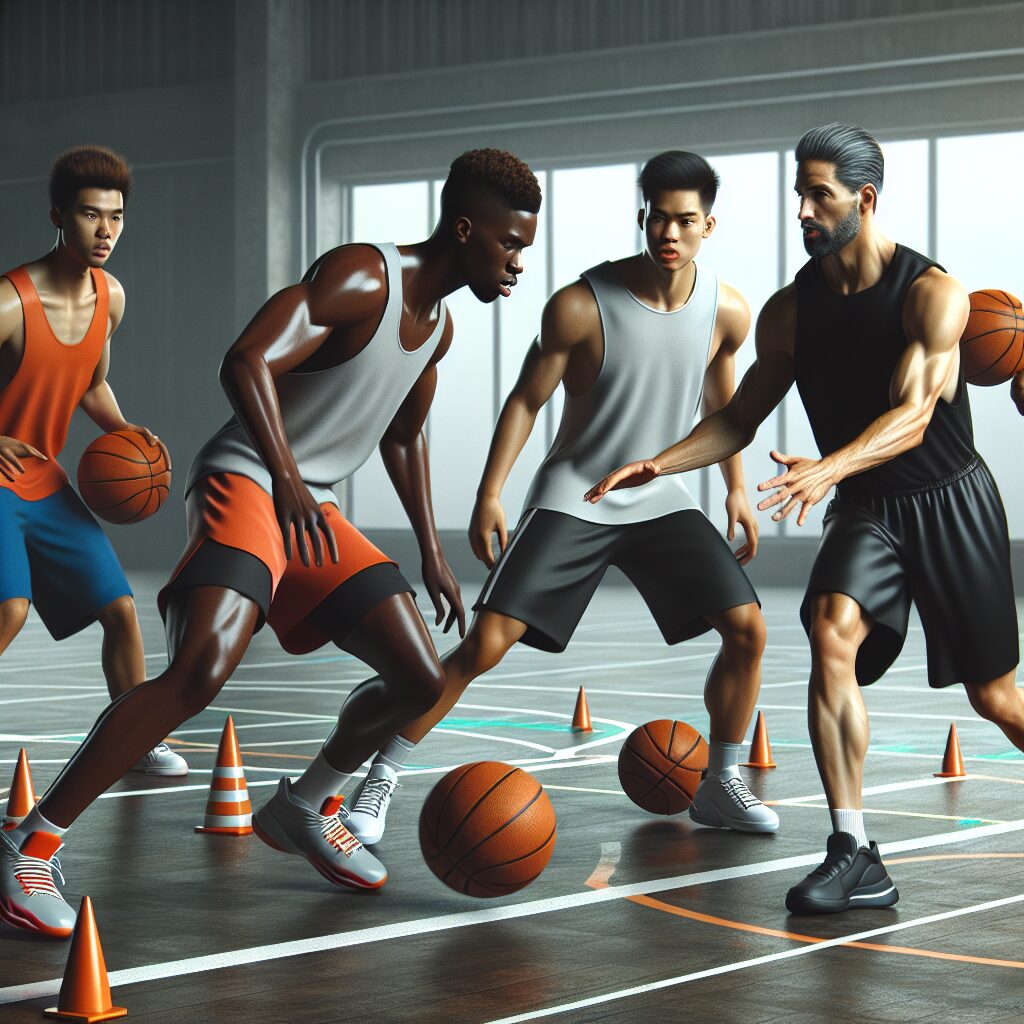Field Hockey Dribbling: The Essence of Ball Handling
In the thrilling sport of field hockey, ball handling skills are not just desirable, they are essential. Dribbling, in particular, reigns as the quintessential technique for players seeking to wield control over the game. Defined as the art of maneuvering the ball with the stick while maintaining control and precision, dribbling allows players to outmaneuver opponents, create scoring opportunities, and ensure seamless ball transitions within their team. With its unique impact on the game, mastering the art of field hockey dribbling is essential for players of all positions.
Engaging in field hockey dribbling serves as a catalyst for strategic plays and game-changing moments. As players skillfully manipulate the ball with their sticks, they can deceive their opponents, creating openings to penetrate the defense or set up plays for their teammates. The fluid nature of dribbling empowers players to navigate around defenders swiftly, sowing confusion and unpredictable strides on the field. Furthermore, effective dribbling allows players to maintain possession, preventing turnovers and ensuring constant pressure on the opposition.
In the following sections, we will explore the key takeaways of field hockey dribbling, unraveling the secrets behind executing precise dribbles, mastering effective control, and honing one’s decision-making skills. By delving into various techniques, strategies, and tactics, this article aims to equip players with the knowledge and tools necessary to elevate their game. So, without further ado, let us embark on a journey to unravel the art of field hockey dribbling and unlock new dimensions of ball handling prowess.
Key Takeaways
1. Field hockey dribbling is the fundamental skill required for ball handling in the sport, involving quick and controlled movements to maneuver the ball around opponents.
2. Developing a strong grip on the stick along with proper body positioning aids in maintaining control during dribbling, enabling players to change direction and speed effectively.
3. Utilizing quick hand-eye coordination and proper footwork is crucial for successful field hockey dribbling, allowing players to navigate through tight spaces and evade defenders.
4. Different types of dribbles, such as the Indian dribble and the pull-back dribble, offer players various tools to deceive opponents and create scoring opportunities.
5. Practicing dribbling drills and honing stick skills are essential for improving field hockey dribbling abilities, enabling players to confidently and seamlessly integrate this skill into gameplay.
What is the Importance of Field Hockey Dribbling in Ball Handling?
The Basics of Field Hockey Dribbling
Field hockey dribbling is an essential skill that every player needs to master. It involves controlling the ball with the stick while maneuvering through opponents and maintaining possession. Dribbling allows players to create opportunities, evade defenders, and execute offensive plays effectively.
Developing Stick Control
Stick control is the foundation of field hockey dribbling. It is crucial to practice control over the ball’s movement and direction using the stick. The grip, body positioning, and hand-eye coordination play pivotal roles in mastering this skill. Regular training drills focused on stick handling will improve your overall dribbling proficiency.
Types of Field Hockey Dribbles
There are various dribbling techniques in field hockey that players employ based on the game situation:
1. Push Dribble:
The push dribble involves tapping the ball lightly, propelling it forward using the flat face of the stick. It is commonly used to move the ball quickly and maintain control while running.
2. Indian Dribble:
The Indian dribble, or reverse stick dribble, is executed by holding the stick with the backhand grip and guiding the ball in a circular motion using the stick’s rounded side. It is an effective technique for quickly changing directions and maneuvering around defenders.
3. Drag Dribble:
The drag dribble requires players to pull or drag the ball alongside the stick while moving. This technique provides close ball control and helps players navigate tight spaces or evade defenders in one-on-one situations.
4. 3D Dribble:
The 3D dribble involves lifting the ball off the ground by rolling the stick’s face underneath it, creating aerial control. This advanced technique allows players to dribble over sticks, eliminate opponents, and create scoring opportunities.
Essential Skills for Effective Dribbling
Successful field hockey dribbling requires a combination of various skills:
1. Agility and Speed:
Being agile and fast on your feet helps you maintain control of the ball while dribbling in different game situations. Agility training, footwork exercises, and sprint drills can enhance your quickness and responsiveness.
2. Vision and Awareness:
To effectively dribble, it is crucial to have excellent vision and awareness of the playing field. This enables you to anticipate the movement of opponents, spot open teammates, and make quick decisions while retaining possession.
3. Ball Control and Coordination:
Having precise ball control and coordination allows you to navigate through tight spaces, execute skillful maneuvers, and maintain possession even under pressure. Regular practice and training drills focused on improving ball control skills are essential.
4. Change of Pace and Direction:
Being able to change pace and direction while dribbling confuses defenders and makes it harder for them to anticipate your next move. Practicing sudden changes in speed and direction will add unpredictability to your dribbling style.
Tips for Improving Field Hockey Dribbling
- Focus on your grip and holding the stick correctly, ensuring optimal control over the ball.
- Practice dribbling with both the forehand and backhand sides of your stick to become versatile.
- Regularly engage in small-sided games or drills that simulate game-like dribbling scenarios.
- Experiment with different dribbling techniques to expand your skill set and keep opponents guessing.
- Watch and analyze professional field hockey matches to observe how the top players handle the ball and incorporate their strategies into your own game.
Frequently Asked Questions
Question 1: What is field hockey dribbling?
Field hockey dribbling refers to the technique used to control and maneuver the ball while in motion on the field.
Question 2: Why is dribbling important in field hockey?
Dribbling is vital in field hockey as it allows players to navigate through opponents, maintain possession, and create scoring opportunities.
Question 3: What are the basic dribbling skills in field hockey?
The basic dribbling skills in field hockey include the Indian dribble, push dribble, slap dribble, and reverse stick dribble, among others.
Question 4: How can I improve my dribbling skills?
To enhance your dribbling skills, practice regularly, focus on ball control, remain low to the ground, and work on your hand-eye coordination.
Question 5: What are some common mistakes to avoid while dribbling in field hockey?
Common mistakes in field hockey dribbling include gripping the stick too tightly, looking down at the ball instead of scanning the field, and not using the non-dominant side effectively.
Question 6: Can dribbling be done in a stationary position?
Yes, you can practice stationary dribbling to improve your close control and ball-handling techniques.
Question 7: How can I dribble through defenders effectively?
To dribble through defenders effectively, you can use deceptive moves, change of pace, dodge techniques, and quick changes in direction.
Question 8: Is dribbling more important than passing in field hockey?
Dribbling and passing go hand in hand in field hockey. Both skills are crucial for successful gameplay, and their importance varies depending on the game situation.
Question 9: Can dribbling be useful in defensive play?
Absolutely! Dribbling is not only beneficial in offense but also in defensive play. It allows defenders to evade opponents and initiate counter-attacks.
Question 10: Are there any specific rules or restrictions for dribbling in field hockey?
Yes, there are rules regarding the height of the stick, the use of the body, and obstruction of opponents while dribbling. It is essential to understand and comply with these rules.
Final Thoughts
Dribbling is at the core of ball handling in field hockey. It is an essential skill that players must develop to excel in the sport. Mastering the different dribbling techniques provides players with the ability to maintain control over the ball, create scoring opportunities, and outsmart the opposition.
Field hockey dribbling requires a combination of both technical finesse and strategic thinking. It is not solely about individual skills, but also about reading the game, making quick decisions, and effectively communicating with teammates. By practicing dribbling consistently, players can enhance their overall game performance and contribute significantly to their team’s success.




